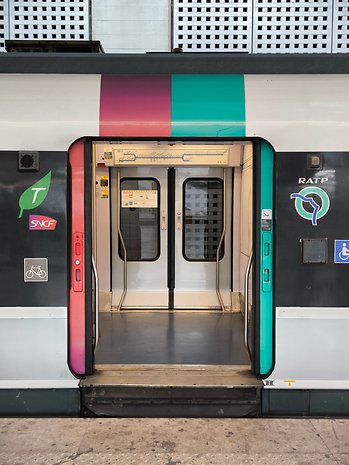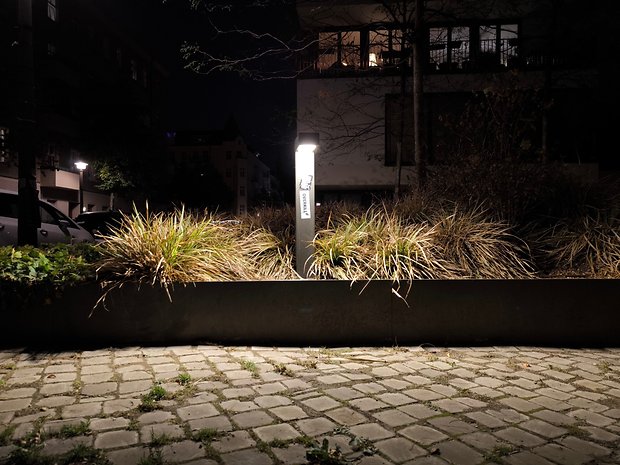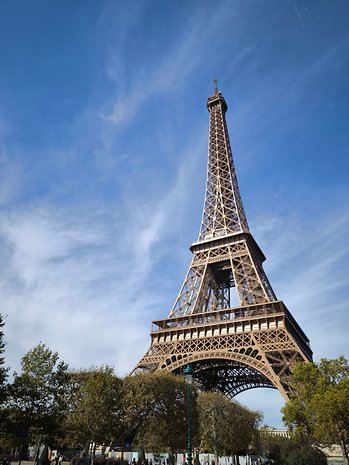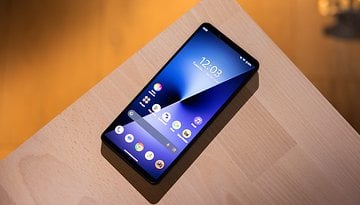Xiaomi 13T Pro Camera Review: How Good is the Leica Camera?


Together with Leica, Xiaomi wants to introduce particularly natural photos to their 13T Pro smartphone. This dream team installed a triple camera configuration at 50 megapixels in the telephoto and main camera as well as 12 megapixels for the ultra-wide angle shooter. I discovered just how well the cameras performed in everyday use, and in order to do so, I traveled half of Europe!
I must admit, the goal of my little European tour was actually our three-country check to test the battery life of the Xiaomi 13T Pro. However, Paris and Brussels were also perfect for putting the smartphone's camera to the sword. If you haven't heard about Xiaomi's new smartphones yet, we offer a comparison between the 13T and the 13T Pro. Matt has already reviewed the Xiaomi 13T Pro in detail.
This article will now once again focus on the cameras of the Xiaomi 13T Pro. Xiaomi has been working with Leica, the esteemed German camera manufacturer from Wetzlar, for some time now. A similar strategy was already used in the Xiaomi 13 Ultra, whose camera was really powerful in the review.
Is the Xiaomi 13T Pro, which is considerably cheaper with an MSRP of €799 (approx. $840), just as good? Do take note that the Xiaomi 13T Pro is unavailable in the US officially, which is why there is no official US price.
Technology and Leica integration
Let's first take a look at the technology in the Xiaomi 13T Pro. The smartphone features a triple camera at the back. As with many smartphones, there's a powerful main camera with a focal length of 24 mm, which features 50 megapixels resolution here. However, Xiaomi uses pixel binning to increase the quality of the photos. Therefore, the pictures ultimately have a resolution of 12 megapixels.
It is exciting that Xiaomi also relies on 50 megapixels for the telephoto camera. Optically, the camera represents a 2x zoom with a focal length of 50 mm. However, since we have quite a high native resolution, the smartphone can still realize a 4x additional zoom—that is, a focal length of 200 mm—without any quality loss.

The ultra-wide angle camera has a resolution count of 12 megapixels and covers a focal length of 15 mm. Last but not least, there is a front-facing camera that features 20 megapixels resolution. Without autofocus and with a quite small sensor, it is the weakest camera in the Xiaomi 13T Pro. You can see how good the quality is in the gallery at the end of this article.
Before we take a look at the photos, I want to talk about integration with Leica. The camera company provided Xiaomi with Summilux lenses for the cameras on the 13T Pro. In addition, Xiaomi and Leica have made fine adjustments in the image processing, which should give the photos a certain Leica look.
In the Xiaomi 13T Pro, Xiaomi wants to realize this via two color profiles that can be applied to all photos of the camera. "Leica Natural" features lower contrasts and slightly desaturated colors. Leica Vivid, on the other hand, is richer in contrast and renders colors a bit more brightly. In addition to the color profiles, Leica also simulates three professional looks in portrait mode.
Here, Leica also plays with focal lengths and uses 35 mm for the documentary style, increases the zoom to 50 mm in the "Swirled Bokeh" mode, and then zooms in even closer for the "Soft Focus". Let's take a look at how well this really looks later.
Part of a camera test is, of course, video, which I'll cover in a separate chapter later. However, the maximum recording resolution stands at 8K at 24 frames per second. It is also exciting that Xiaomi allows recording in a log profile in 4:2:0 color subsampling and HDR 10. However, more on that later.
Triple camera in daylight
To assess the quality of the photos of the Xiaomi 13T Pro, we focused on a few everyday scenarios in this review. After all, it makes technical sense to look at the quality of the cameras individually, but the interaction is more important in everyday use. The same applies to the picture styles and functions that Xiaomi and Leica integrated into the smartphone.
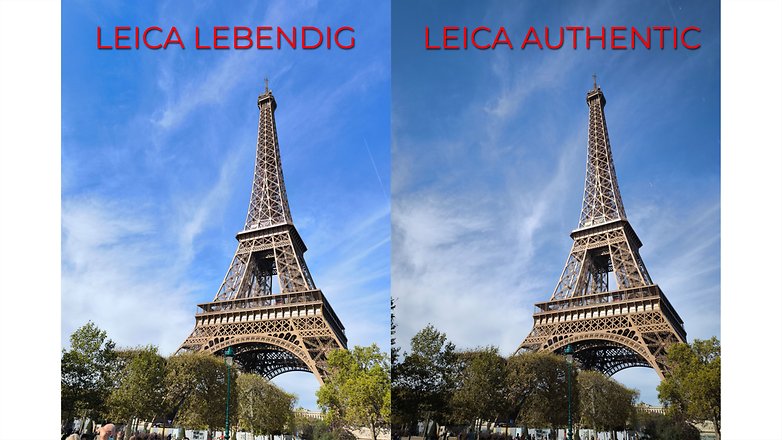
Let's take a look at the first two pictures taken by the phone. On the right, you can see the "Leica Authentic" picture style, and on the left, "Leica Vivid". In the authentic mode, we see more neutral colors and reduced contrasts. The vivid mode cranks up the saturation significantly and also brings out the contrast more. However, I am pleased that even in this mode, the results still look natural and balanced.
Xiaomi and Leica refrained from creating too strong an HDR look here. The shadows of the Eiffel Tower remain realistic in each case, and the photos do not look too artificial. If we were to take a closer look, we can see a high level of detail in both pictures. However, there are some chromatic aberrations, i.e. color fringes around bright areas, which can be seen. However, these are just minor details; overall, Xiaomi does an impressive job here.
We can increase the detail level of the pictures with the 13T Pro by using the full resolution of the sensor. I have enlarged the picture that I took with the native sensor resolution of 50 megapixels in the sample image once. Although details have a certain watercolor effect due to the smartphone's post-processing, this is hardly noticeable in the overall view.
If you are on vacation and want to take pictures with a higher resolution, such as printing a poster-sized photo later for posterity, this is easily possible with the 13T Pro under good lighting conditions.

Compared to the best camera smartphones, you will have to cut back on the digital zoom of the Xiaomi smartphone, which costs just under €800. It is nice to know that Xiaomi included a telephoto camera with 2x magnification. However, its 50 mm focal length is hardly in the telephoto range from a technical point of view.
When it comes to photography, 50 mm lenses are roughly equivalent to the human field of view. However, the smartphone still offers some room for zoom due to the 50 MP sensor in the telephoto camera.
Thus, the level of detail remains pretty good at 5x zoom. However, the quality decreases further when you need to access higher zoom levels. The big brother of the 13T Pro, the Xiaomi 13 Ultra (review), definitely does a better job here.
Samsung also has more zoom potential with the Galaxy S23 Ultra. Apple also installed a periscope camera with a higher focal length in the latest iPhone 15 Pro Max (review). However, it is in a different league in terms of price.

Let's zoom out completely and take a look at the ultra-wide angle. Equivalent to 13 mm in the small picture, we captured large subjects in the photo quite well. In the wide-angle shot, the Xiaomi phone no longer downscale pictures from 50 megapixels, but uses a native resolution of 12 MP.
While this is not a big deal, color fringing around the structure of the Eiffel Tower can be quite distracting. At the same time, we see an unsightly reflection at the upper left edge of the picture, which I had to shield with my hand.

What I like very much in the test is the interaction between the three cameras. Xiaomi managed to offer results with hardly any noticeable differences in color accuracy as well as white balance between all three cameras. Regardless of the focal length, the pictures look like they were taken on the same day and with the same camera. Numerous other camera smartphones have shortcomings here.
Pictures in low-light conditions
Even though I really like the shots of the 13T Pro in daylight, most cameras take good photos in daylight. When it gets dark outside, or you are indoors, less light hits individual pixels, making it harder to capture detailed images.
Like most smartphones, the 13T Pro offers a dedicated night mode that is supposed to enable particularly clear pictures via computational photography. The phone computes several pictures, and we can see how they look below:

In comparison, we see a clear difference between the photo with night mode and without night mode. The phone managed to rescue some colors pretty well from the darkness, with detailed richness when zooming in looking good as well. However, the night mode image looked quite artificial for my taste. Fortunately, this is only the case for the 13T Pro when night mode is enabled, natural-looking photos are also possible in the dark without it.
So, if you were to take pictures in the dark with the Xiaomi 13T Pro and correct the exposure by toning it down a bit, you would get really natural-looking and noise-free pictures. The cooperation with Leica seems to have proven itself again because the phone still reproduces the colors naturally.

At this point of the camera review, I would like to briefly mention the phone's Pro mode. Here you will not only find practical features like histograms or focus peaking you can also manually set the exposure correction. This means you don't always have to pull down the exposure slider when shooting to compensate for overexposure or too much brightening in night or low-light scenes.
Portrait mode with Leica simulation
However, the Xiaomi 13T Pro has three dedicated portrait modes that were developed together with Leica. We already know this from the Vivo X90 Pro, which can simulate different Zeiss lenses including bokeh (the blur in the background) on request.
Leica and Xiaomi do not commit to specific lenses in the "master modes". Instead, there is "Documentation" with a 35 mm focal length, "Swirled Bokeh" with a 50 mm focal length (native focal length of the telephoto camera), and "Soft Focus" with a 90 mm focal length.

When I first tried it out, I was a little disappointed with the sharpness of the portraits in the Xiaomi 13T Pro. However, there's a setting in the settings called "HD Portrait" that brings out a bit more detail from faces. Personally, I like this better since I like detailed portraits.
I am also pleased that Xiaomi retained the color modes from "Leica Vivid" and "Leica Authentic". Portraits are thus just as natural as the phone's other pictures.

I found the master modes themselves more of a nice gimmick than being a serious camera mode. While documentary and swirled bokeh still appealed to me somewhat, "soft focus" carried a certain 80s erotic movie flair to it. At the same time, details are blurred too much for me here.

However, the detection of subjects and the digital blurring of the background worked really well on the 13T Pro. Since the phone can also take portrait shots in scenes without faces, it is also suitable for street photography. I really liked the two pictures from Paris above, even though they looked a bit artificial.
You can find many more photos from the Xiaomi 13T Pro in the following photo gallery.
Special features and video
Video-wise, the Xiaomi 13T Pro shines with 8K recording at up to 24 frames per second. That is good, but it is no longer a special feature in this price range. Features like 4K at 60 FPS and HDR10+ recording are much more useful for everyday use. However, these are not compatible with each other.
HDR recordings are only possible in a maximum of 4K/30fps. The phone records a larger dynamic range, which can be particularly useful for post-processing. However, make sure that your operating system is suitable for playing back HDR content. I've always had problems with Windows 11 in particular.
If you were to switch to the video function in Pro mode, you can find another exciting special function here. The 13T Pro allows you to record in a LOG format, which gives you much more control in post-processing. For filming, you can even insert a LUT to convert the video preview to the Rec.709 standard while still on the smartphone. You can also import your own LUTs.
If you are looking for a phone whose recordings you want to use for video projects in which you mainly film with more expensive video cameras, this option is really handy. This is because the more neutral recordings can be adjusted afterward to match the look of the other hardware, resulting in a more harmonious look for the video
Conclusion
In summary, I think Xiaomi's collaboration with Leica on the 13T Pro was a really successful one. Smartphone photos in general have a tendency to be heavily optimized for the colorful AMOLED displays in the respective devices. Therefore, I am often bothered by the excessive HDR effects and strong sharpness, and Xiaomi devices have not impressed me too much in terms of camera technology in the past, either.
However, Leica now seemed to rein in Xiaomi a bit when it comes to post-processing the photos. This is especially noticeable in the "Leica Authentic" mode, as the pictures look more like they were taken with a high-quality digital camera than with a smartphone. Personally, I like this very much. The photos reminded me a bit of those from my review of Sony's Xperia 1 Mark V, which is almost twice as expensive.
Of course, you do not get a "real Leica camera" with the 13T Pro. A closer look reveals that some of the photos of the 13T Pro look artificial, which is typical for a smartphone, and strong color fringes around overexposed image areas can be seen, especially when captured using the ultra-wide angle lens.
However, this is not a big deal since the camera of the 13T Pro produced strong results in my test. At the same time, the camera is feature-rich enough that trying it out was fun and motivated me to take pictures first and foremost. I wanted to know how the Xiaomi 13T Pro rendered the scenery in many situations.
And any camera that motivates you to take pictures is an excellent camera in my world!











